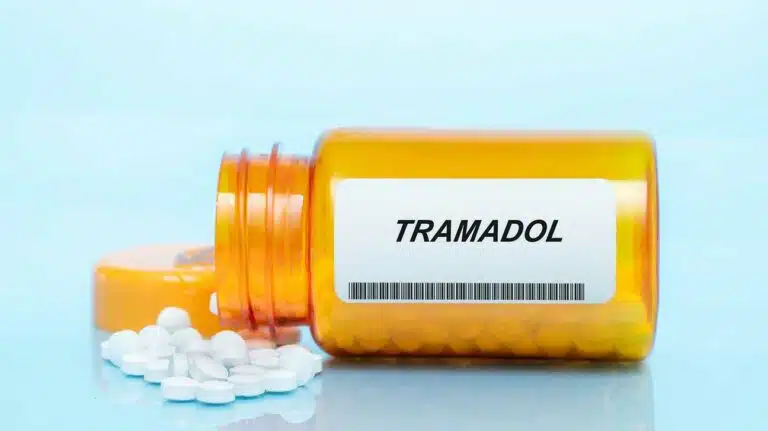Tramadol Dosage & Side Effects – What You Need to Know
Tramadol Dosage & Side Effects – What You Need to Know
Blog Article
Tramadol is a prescription medication used to treat moderate to severe pain. It belongs to the class of opioid analgesics and works by altering the way the brain perceives pain. Although it is an effective pain reliever, it also comes with potential risks and side effects. Understanding the correct Tramadol dosage & side effects is crucial to ensuring safe and effective use.
In this article, we will cover the recommended dosages of Tramadol, its possible side effects, precautions, and other essential information you need to know before using this medication.
What is Tramadol?
Tramadol is a synthetic opioid medication prescribed to manage acute and chronic pain conditions. It works by binding to opioid receptors in the brain, blocking pain signals, and also increasing levels of serotonin and norepinephrine. Due to its opioid nature, Tramadol has the potential for dependency and abuse, making it essential to use under medical supervision.
Recommended Tramadol Dosage
Tramadol Dosage for Adults
The appropriate Tramadol dosage depends on various factors, including the patient's medical condition, pain severity, and tolerance to opioids. Here are the general guidelines for adult usage:
Immediate-Release (IR) Tablets:
- Initial dose: 50-100 mg every 4-6 hours as needed for pain relief.
- Maximum daily dose: 400 mg per day.
- For patients who are opioid-naïve, a lower starting dose of 25 mg may be recommended.
Extended-Release (ER) Tablets:
- Initial dose: 100 mg once daily.
- Titration: The dose may be increased by 100 mg increments every 5 days, as tolerated.
- Maximum daily dose: 300 mg per day.
Tramadol Dosage for Elderly Patients
Elderly individuals (aged 75 and older) may have a reduced ability to metabolize Tramadol, increasing the risk of side effects. For such patients:
- The total daily dose should not exceed 300 mg.
- Close monitoring is essential to prevent potential complications.
Pediatric Tramadol Dosage
Tramadol is not recommended for children under the age of 12 due to the risk of severe breathing problems. For children aged 12-18:
- Immediate-release formulations are sometimes prescribed at lower doses.
- Extended-release forms should be avoided.
Tramadol Side Effects
Like all medications, Tramadol comes with potential side effects. While some are mild, others can be severe and require medical attention.
Common Side Effects
- Dizziness
- Drowsiness
- Nausea
- Vomiting
- Constipation
- Headache
- Dry mouth
Serious Side Effects
- Respiratory depression (slow breathing)
- Seizures
- Serotonin syndrome (characterized by confusion, fever, sweating, and rapid heartbeat)
- Dependency and addiction
- Increased risk of overdose, especially when combined with other central nervous system depressants
If any of these severe side effects occur, medical attention should be sought immediately.
Precautions & Warnings
Who Should Avoid Tramadol?
Tramadol may not be suitable for everyone. People with the following conditions should avoid using it or use it with extreme caution:
- History of opioid addiction or substance abuse.
- Severe asthma or respiratory disorders.
- History of seizures or epilepsy.
- Liver or kidney disease.
- Mental health disorders, such as depression or suicidal thoughts.
Drug Interactions
Tramadol can interact with several other medications, increasing the risk of side effects. Some dangerous drug interactions include:
- Monoamine oxidase inhibitors (MAOIs) – Can lead to life-threatening reactions.
- Selective serotonin reuptake inhibitors (SSRIs) – May cause serotonin syndrome.
- Benzodiazepines or alcohol – Can lead to severe drowsiness and respiratory depression.
To prevent harmful interactions, always inform your doctor about any other medications you are taking.
How to Use Tramadol Safely
To minimize risks and maximize the benefits of Tramadol, follow these safety tips:
- Take the prescribed dosage – Never exceed the recommended dose, as this increases the risk of overdose.
- Avoid alcohol and sedatives – Combining Tramadol with these substances can cause dangerous side effects.
- Monitor for side effects – If you experience severe symptoms, seek medical help immediately.
- Do not suddenly stop taking Tramadol – This can lead to withdrawal symptoms. Instead, consult your doctor for a proper tapering plan.
Tramadol Withdrawal Symptoms
If Tramadol use is stopped abruptly, withdrawal symptoms may occur, including:
- Anxiety
- Sweating
- Nausea
- Insomnia
- Muscle pain
- Irritability
A gradual dose reduction under medical supervision is recommended to avoid withdrawal effects.
Conclusion
Tramadol is a potent pain relief medication that can effectively manage moderate to severe pain when used correctly. However, it also comes with potential risks, including dependency, side effects, and withdrawal symptoms. Understanding Tramadol dosage & side effects is essential for ensuring safe use and preventing complications.
If you are considering Tramadol for pain management, always consult your doctor to determine the appropriate dosage and assess any potential risks. Proper adherence to guidelines can help you benefit from its pain-relieving properties while minimizing adverse effects.
 Report this page
Report this page